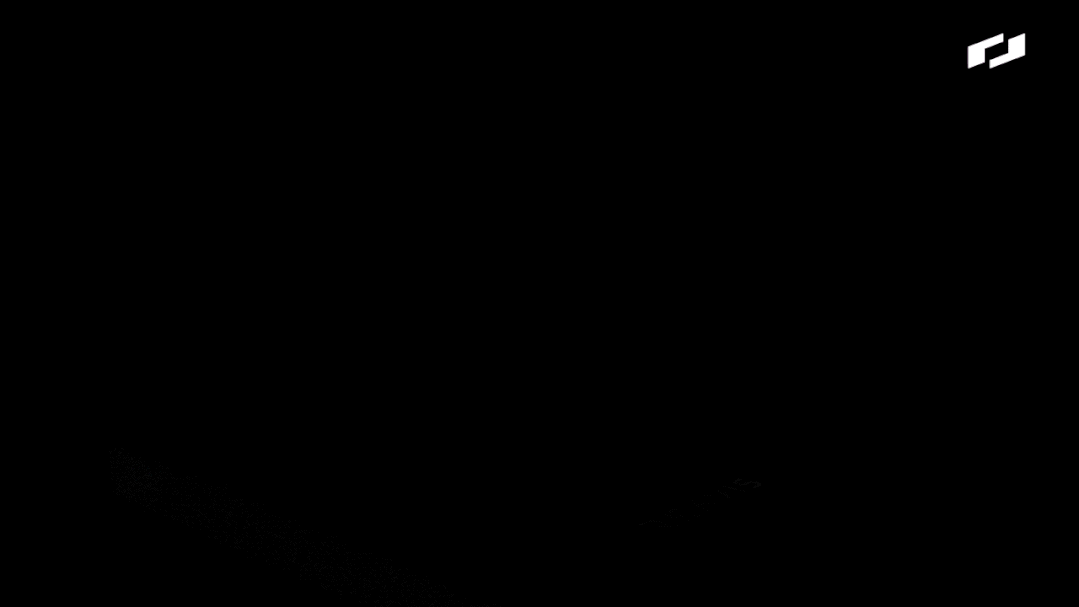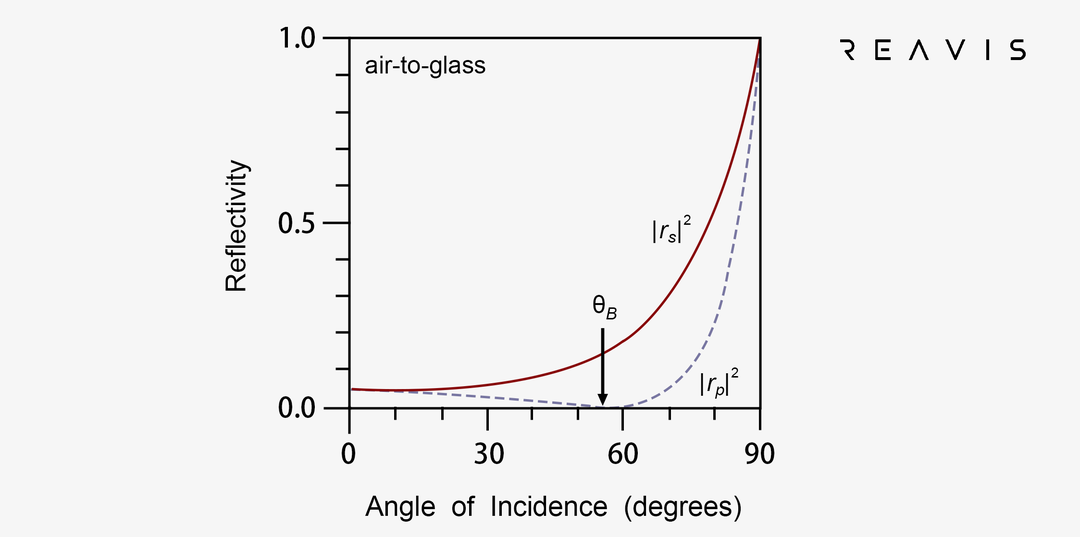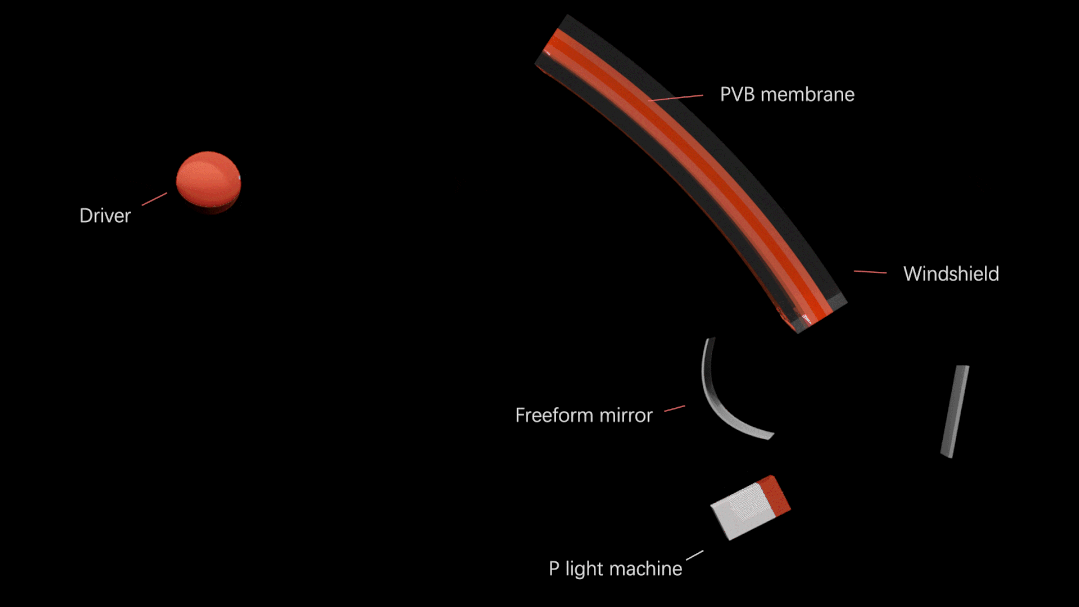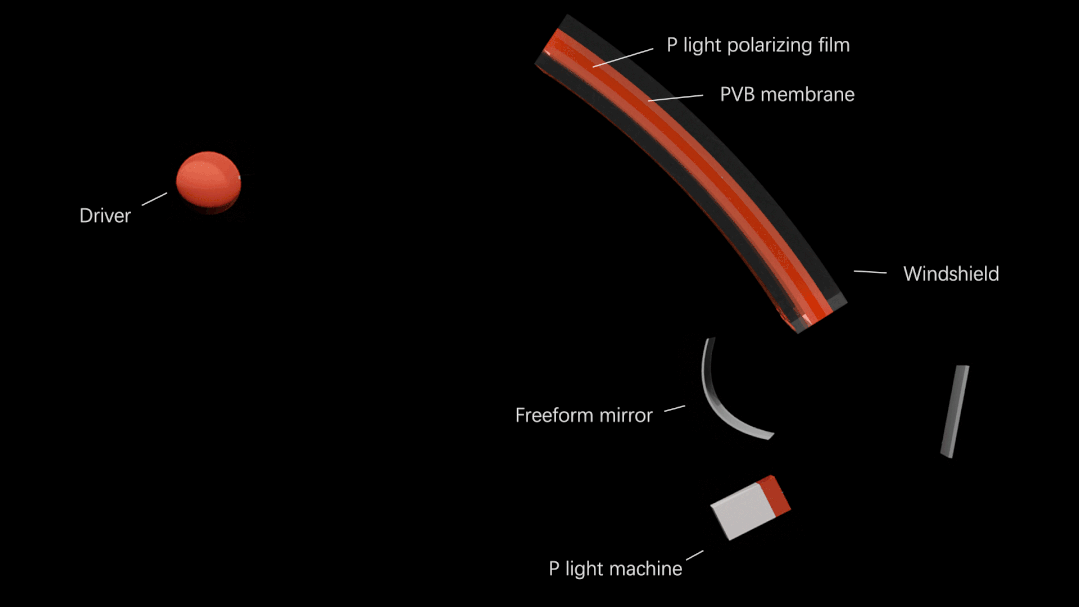In the previous issue on Ghost image and Its Solutions (Part 1), we discussed the principle behind HUD ghost image generation and the conventional solution—using wedge-shaped PVB film on the windshield. In addition to the wedge-shaped PVB film, this issue will introduce some other technological approaches that can solve the ghost image issue.
One such technology route for eliminating ghost image involves leveraging the polarization properties of light to control the polarization state of light reflected after incidence on the windshield, thereby weakening or eliminating ghost image. To better understand this technological route, let's first grasp two concepts: polarization of light and Brewster's angle.
Polarized Light and Brewster's Angle
Light exhibits polarization, with natural light (such as sunlight) being in a random polarization state. When randomly polarized light propagates from one uniform medium (such as air) to another uniform medium (such as a windshield), upon reaching the surfaces, some light undergoes refraction while the rest undergoes reflection. Decomposing all light with different polarization directions concerning the incident plane, parallel light to the incident plane is referred to as P light (P for the German word "parallel"), and light perpendicular to the incident plane is termed S light (S for the German word "senkrecht," meaning perpendicular). Figure (1) illustrates the definition of P light and S light in this optical system.

When polarized light enters the glass from air, reflection occurs at the glass surface. Figure (2) illustrates the reflectivity of P light and S light at the air-glass interface [2]. It can be observed that at this interface, the reflectivity of S light is higher compared to that of P light, indicating that when light propagates from air to the windshield, the reflected light is primarily composed of S light.

When light enters the surface of glass from air at an angle of approximately 57 degrees (assuming a glass refractive index �=1.5n=1.5), the reflectivity of P light is 0, which is known as the Brewster angle [3]. When randomly polarized light enters the glass from air at the Brewster angle, the reflectivity of P light is at its minimum, nearly equivalent to no reflection [3]. Utilizing the characteristic of P light having a reflectivity of 0 at the Brewster angle, it is possible to attenuate or eliminate ghost images in HUDs.
As mentioned earlier, although the reflectivity of P light is 0, S light still undergoes reflection at the front and rear surfaces of the windshield, resulting in the observer perceiving two ghost images. Therefore, solely relying on the Brewster angle cannot completely resolve the ghost image issue.

To achieve ghost-free projection, we can incorporate a light source in the optical system that generates P-polarized light. For the entire optical system, the linearly polarized light produced by the light source will be entirely P-polarized when it enters the windshield. Due to the weak reflectivity of P light at the air-glass interface [3], the P-polarized light rays incident at the Brewster angle on the first layer of glass undergo only refraction without reflection; refraction of these light rays results in both P and S light, which undergo reflection and refraction at the surface of the second layer of glass. At this point, a small portion of the light reaches the observer after reflection. Therefore, by employing a P-polarized light source and utilizing the Brewster angle, ghost image can be eliminated.
Transparent Nano-coating
Building upon the aforementioned method, to enhance the brightness of the virtual image, a P-polarized reflective coating can be added within the windshield glass when using a P-polarized light source and exploiting the Brewster angle. This coating reflects the P-polarized light refracted into the glass, providing a ghost-free virtual image. Typically, this reflective coating consists of multiple layers, offering high transparency and high reflectivity for P-polarized light, commonly referred to in the industry as transparent nano-coating. Additionally, this coating may sometimes be used independently within a certain range of incident angles around the Brewster angle, or in conjunction with wedge-shaped films [4].

As discussed earlier, the elimination of ghost image using polarization methods requires the utilization of a P-polarized light source, the Brewster angle, and even a P-polarized reflective coating. Therefore, this system imposes stringent requirements on the angle of incidence, making it challenging to meet the design requirements of different vehicle models and windshields. Additionally, this method increases the complexity and cost of HUD design. Moreover, when the angle of incidence fluctuates within a certain range around the Brewster angle, the brightness of the reflected P-polarized image may be less than 1% of the original image, potentially affecting imaging brightness [4].
Parallel Vector (PV) Ghost-Image Free Technology
In contrast to the wedge-shaped PVB film solution introduced in the previous issue and the polarization-based solution in this article, RightView has developed the Parallel Vector (PV) technology. This technology enables ghost-image free projection the need for wedge films or polarized light, through the design of the core optical components and optical system's freeform surfaces. The PV technology, validated over four years of development, can adapt to windshields of different thicknesses and inclinations, various angles of incidence, different virtual image distances (VID), and various types of light sources (TFT, DLP, LCoS, LBS). Multiple mass production projects have already integrated this technology.
#Reference:
[1]Goldstein, D. H. (2017). "Polarized light". CRC press.
[2]Ewart,P. (2019). "Reflection at dielectric surfaces and boundaries. In Optics: The science of light". Morgan & Claypool Publishers.
[3]Brewster,David. (1815). "On the laws which regulate the polarisation of light by reflexion from transparent bodies". Philosophical Transactions of the Royal Society of London. 105: 125–159.
[4]Van Derlofske, J., Pankratz, S., & Franey, E. (2020). "New film technologies to address limitations in vehicle display ecosystems". Journal of the Society for Information Display, 28(12), 917-925.